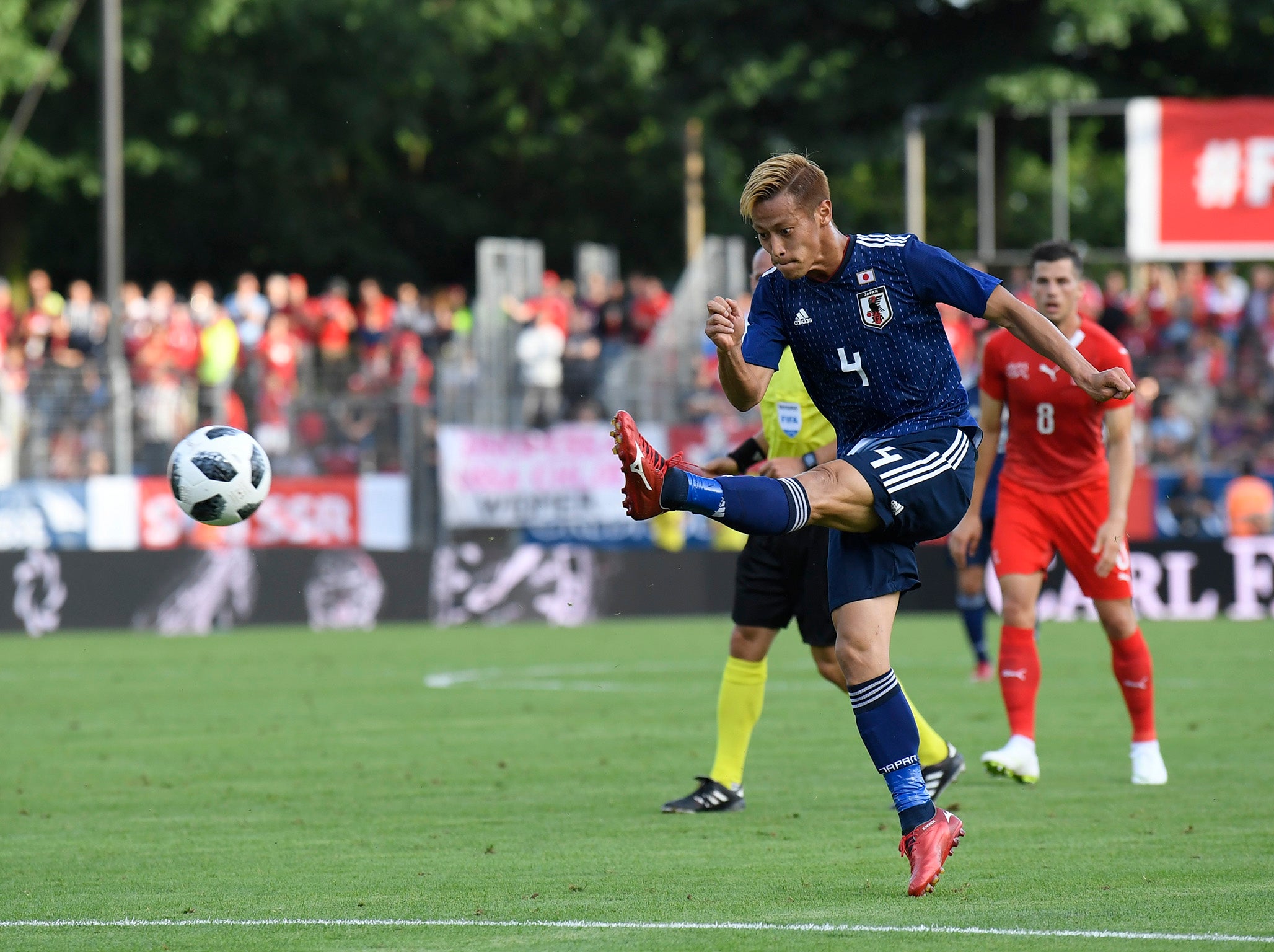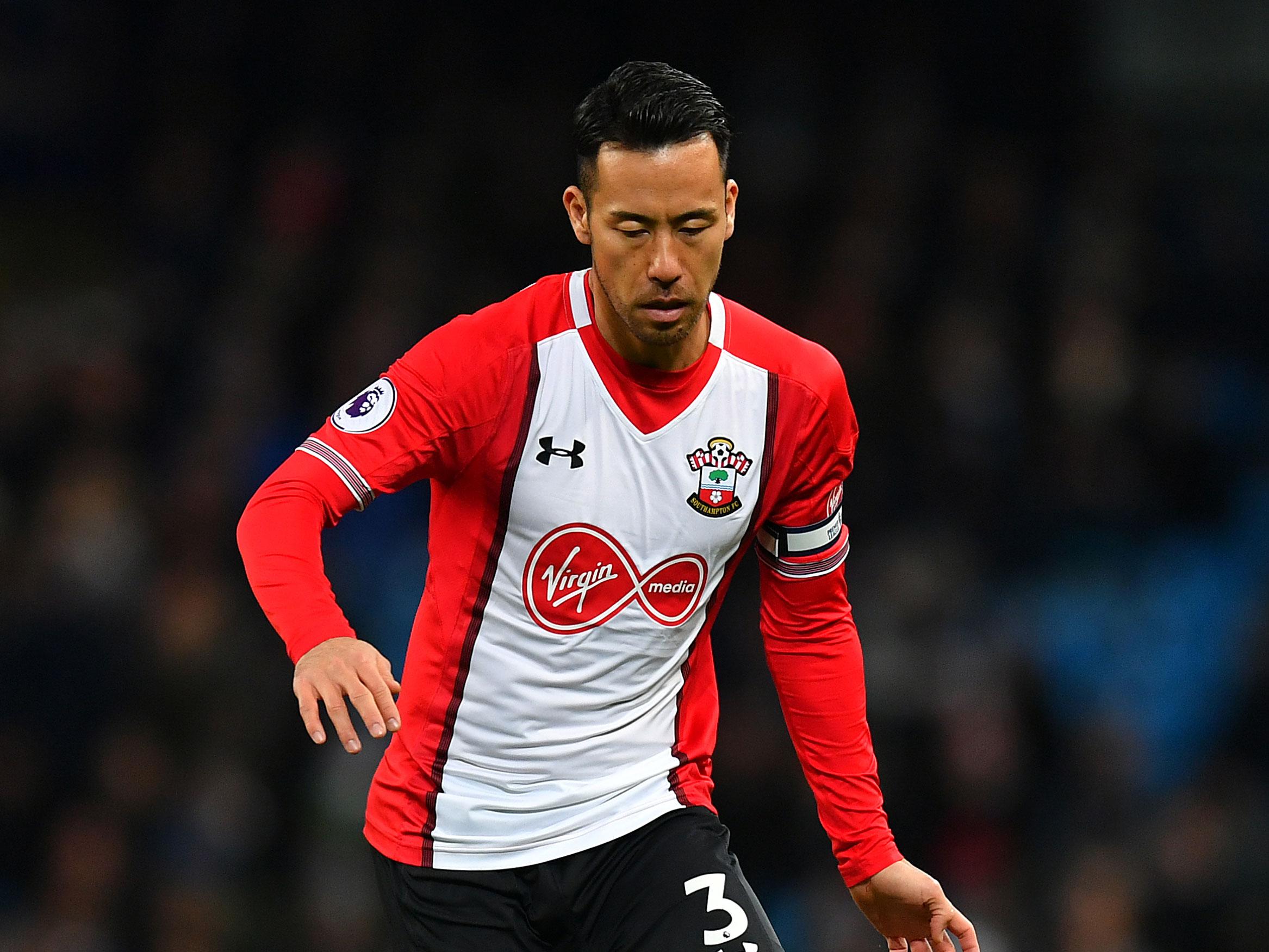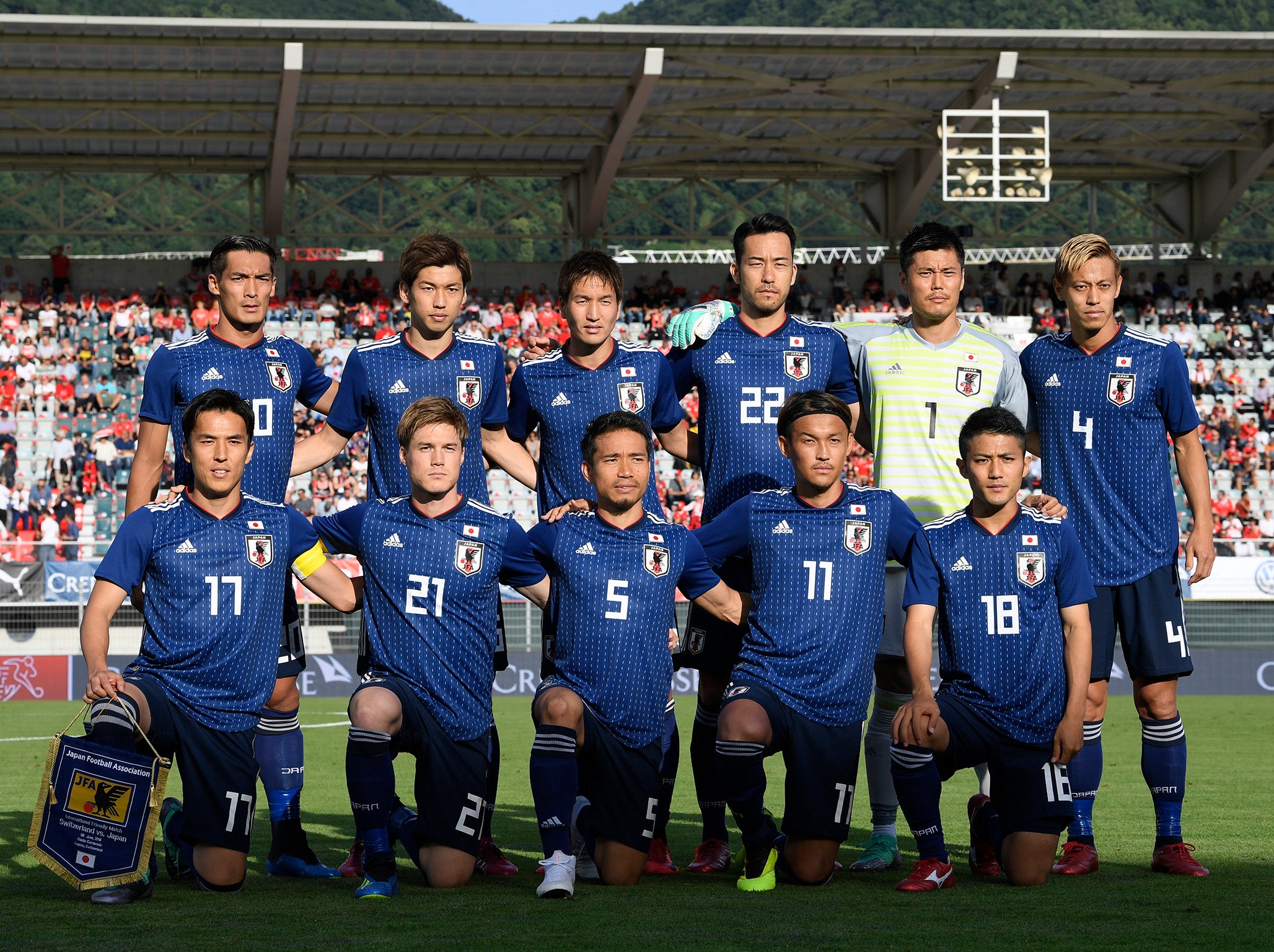Japan World Cup squad guide: Full fixtures, group, ones to watch, odds and more
PROFILE: With the tournament only days away we take an in-depth look at all 32 teams in Russia

Your support helps us to tell the story
From reproductive rights to climate change to Big Tech, The Independent is on the ground when the story is developing. Whether it's investigating the financials of Elon Musk's pro-Trump PAC or producing our latest documentary, 'The A Word', which shines a light on the American women fighting for reproductive rights, we know how important it is to parse out the facts from the messaging.
At such a critical moment in US history, we need reporters on the ground. Your donation allows us to keep sending journalists to speak to both sides of the story.
The Independent is trusted by Americans across the entire political spectrum. And unlike many other quality news outlets, we choose not to lock Americans out of our reporting and analysis with paywalls. We believe quality journalism should be available to everyone, paid for by those who can afford it.
Your support makes all the difference.Can you succeed at a World Cup despite changing your coach two months before the tournament? The answer to that question will determine whether Japan redeem themselves after a limp showing in 2014 or sink to the bottom of an open but competitive Group H in Russia.
Vahid Halilhodzic, the Bosnian coach who led Algeria to the round of 16 in Brazil, was dismissed by Japan in April and replaced by technical director Akira Nishino following an underwhelming run of friendly results and suggestions of a breakdown in trust with several senior players.
Shinji Kagawa, Keisuke Honda and Shinji Okazaki were all dropped for November matches against Brazil and Belgium – both of which Japan went on to lose – and Halilhodzic’s fate was sealed when a 2-1 loss to Ukraine followed a 1-1 draw with Mali in March.
This is the oldest squad that Japan have ever sent to a World Cup, with an average age of just over 28. Nishino, best known for winning the 2008 Asian Champions League with Gamba Osaka, has restored the big names and put his trust in familiar faces. Time, though, is not on his side, and he will be hoping that experience can paper over the cracks of flawed preparation.
Who do they play?
Japan vs Colombia – 13:00, Tuesday 19 June
Japan vs Senegal – 16:00, Sunday 24 June
Japan vs Poland – 15:00, Thursday 28 June
Key players
Keisuke Honda: Now at Mexican club Pachuca, Honda remains Japan’s talisman and chief attacking threat despite disappointing in three years with Milan. His flair, technical skill and set-piece prowess will all be key weapons, and Nishino will be hoping his bleach blond playmaker can re-kindle the dazzling link-up play he has exhibited with Kagawa in the past.

Shinji Kagawa: His second spell at Borussia Dortmund has not come close to matching the productivity of his first, and Kagawa has also fallen short of expectations at international level in recent years. It is reasonable to wonder whether he is past his peak, but at his best there is no doubt that this silky attacking midfielder is still capable of causing any World Cup defence to panic.
Maya Yoshida: After a shaky start to his Premier League career Yoshida has blossomed into a dependable performer for Southampton over the past two season. Japan need him to maintain those standards at the heart of a defence that stood up well in Asian qualifying but will have a much smaller margin for error at the World Cup.

One to watch
Genki Haraguchi: Perhaps the least recognisable name in Japan’s attacking unit, Haraguchi played a key role in helping Fortuna Dusseldorf win promotion for the Bundesliga after joining the club on loan from Hertha Berlin in January. He also chipped in with five goals in World Cup qualification, including big strikes against Australia and Saudi Arabia.
How did they get here?
Japan took top spot in their final qualifying group by a single point ahead of Saudi Arabia and Australia, with a 2-0 home win over the latter securing their automatic World Cup place with a game to spare. Halilhodzic’s organised defence conceded just seven goals in 10 matches, keeping four clean sheets.
There were also ominous signs of the problems ahead, however. The Bosnian used 68 players in his three years in charge, prompting questions about whether or not he knew his strongest team, and also clashed publicly with both his employers and the Japanese media.

How will they do?
Japan’s tournament experience and talent means they cannot be written off, particularly in Group H, but they will be facing three dangerous opponents who can all boast greater continuity and coherence in the lead-up to this World Cup. Nishino’s third game in charge will be the opener against Colombia, where any mistakes will be punished.
Motivation will not be lacking in the Samurai Blue after finishing with only one point en route to a group stage exit in 2014, and most of Nishino’s squad will be competing at their last World Cup. Reaching the knockout stage is possible if the defence holds up while Honda and Kagawa click into top gear, but Japan should be regarded as outsiders.
Odds of winning the tournament: 250/1
Full squad
Goalkeepers: Eiji Kawashima, Masaaki Higashiguchi, Kosuke Nakamura.
Defenders: Yuto Nagatomo, Tomoaki Makino, Wataru Endo, Maya Yoshida, Hiroki Sakai, Gotoku Sakai, Gen Shoji, Naomichi Ueda.
Midfielders: Makoto Hasebe, Keisuke Honda, Takashi Inui, Shinji Kagawa, Hotaru Yamaguchi, Genki Haraguchi, Takashi Usami, Gaku Shibasaki, Ryota Oshima.
Forwards: Shinji Okazaki, Yuya Osako, Yoshinori Muto.
Join our commenting forum
Join thought-provoking conversations, follow other Independent readers and see their replies
Comments